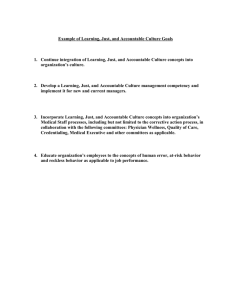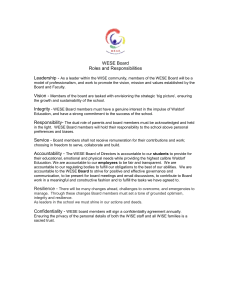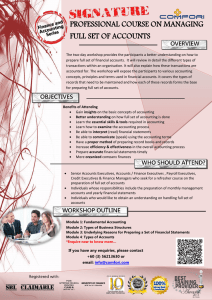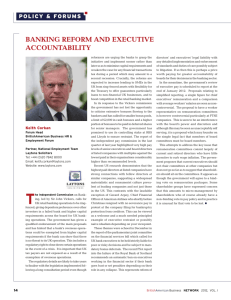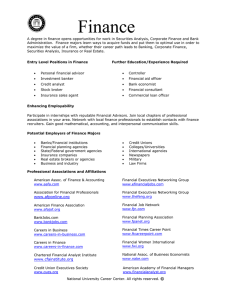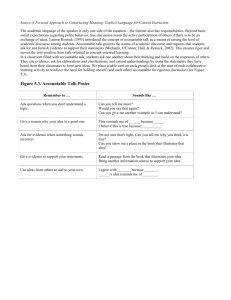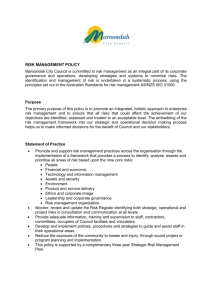BONE MEDICAL LIMITED RISK MANAGEMENT POLICY
advertisement
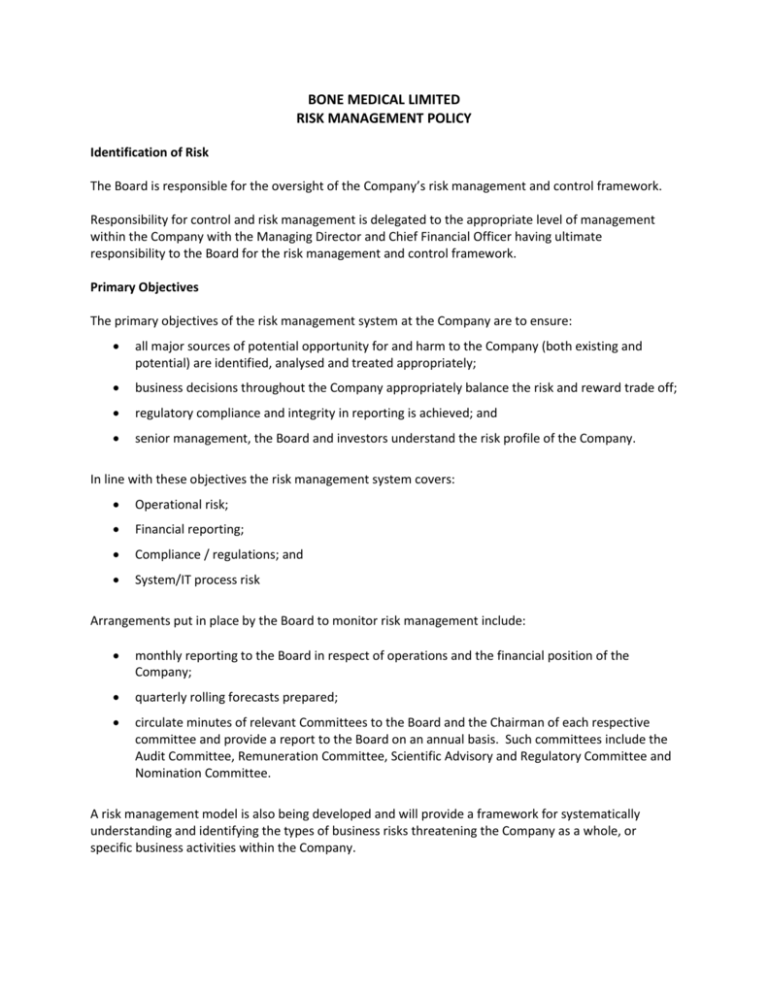
BONE MEDICAL LIMITED RISK MANAGEMENT POLICY Identification of Risk The Board is responsible for the oversight of the Company’s risk management and control framework. Responsibility for control and risk management is delegated to the appropriate level of management within the Company with the Managing Director and Chief Financial Officer having ultimate responsibility to the Board for the risk management and control framework. Primary Objectives The primary objectives of the risk management system at the Company are to ensure: all major sources of potential opportunity for and harm to the Company (both existing and potential) are identified, analysed and treated appropriately; business decisions throughout the Company appropriately balance the risk and reward trade off; regulatory compliance and integrity in reporting is achieved; and senior management, the Board and investors understand the risk profile of the Company. In line with these objectives the risk management system covers: Operational risk; Financial reporting; Compliance / regulations; and System/IT process risk Arrangements put in place by the Board to monitor risk management include: monthly reporting to the Board in respect of operations and the financial position of the Company; quarterly rolling forecasts prepared; circulate minutes of relevant Committees to the Board and the Chairman of each respective committee and provide a report to the Board on an annual basis. Such committees include the Audit Committee, Remuneration Committee, Scientific Advisory and Regulatory Committee and Nomination Committee. A risk management model is also being developed and will provide a framework for systematically understanding and identifying the types of business risks threatening the Company as a whole, or specific business activities within the Company. Material Business Risks & Reporting Given the speculative nature of the Company’s business it is subject to general risks and certain specific risks. Some of these risks include but are not limited to the following: economic risks such as interest rates and inflation regulatory approvals availability of resources reliance on key personnel currency price volatility trial success patent approval environmental risks shortage of capital joint venture agreements and partners The analysis and evaluation criteria are used to continually assess the impact of risks upon the Company’s business objectives. Management is responsible for the development of risk mitigation plans and the implementation of risk reduction strategies. The annual business planning process includes careful consideration of internal and external risk profile of the company. The Managing Director, Technical Director and Chief Financial Officer will report monthly to the board on the areas they are responsible for, including material business risks and provide an annual written report to the Board summarizing the effectiveness of the companies’ management of material business risks. The Company’s business risk management process provides a comprehensive, integrated approach for carrying out risk management activities. This process will allow management to minimise the potential impact of business risks in achieving objectives to create and protect shareholder value. Integrity of Financial Reporting The Company’s Managing Director and Chief Financial Officer (or equivalent) report in writing to the Board (as required by section 295A of the Corporations Act) that: the financial statements of the Company and its controlled entities (where appropriate) for each half and full year present a true and fair view, in all material aspects, of the Company’s financial condition and operational results and are in accordance with accounting standards; the above statement is founded on a sound system of risk management and internal compliance and control which implements the policies adopted by the Board; and the Company’s risk management and internal compliance and control framework is operating efficiently and effectively in all material respects. Responsibilities Managing Director The Managing Director is accountable to the Board, for ensuring that the risk management system is implemented and maintained in accord with the Risk Management Policy. Assignment of responsibilities in relation to risk management is the prerogative of the Managing Director. Chief Financial Officer In conjunction with the Managing Director, the Chief Financial Officer or equivalent is accountable for the implementation of the Risk Policy and for maintaining a program of risk reassessment. The Chief Financial Officer also provides advice to the relevant Senior Executives on risk management matters relevant to their responsibilities. The Chief Financial Officer is to assist senior management and the Board in the effective discharge of their responsibilities with regard to the Company’s internal control environment by ensuring the efficiency and effectiveness of Company processes and identifying opportunities to improve operating performances. At appropriate intervals, the Chief Financial Officer shall determine the adequacy and effectiveness of the Company’s system of internal accounting and operating controls and determine if the business unit/function are managing risks, in accordance with management instruction, policies and procedures, in a manner consistent with Company objectives. Senior Executives Senior Executives are accountable for strategic risk management within areas under their control including the dissemination of the risk management process to operational managers. Collectively the Senior Executive is responsible for: The formal identification of strategic risks that impact upon the Company’s business; Allocation of priorities; The development of strategic risk management plans; Reviewing progress against agreed risk management plans.
